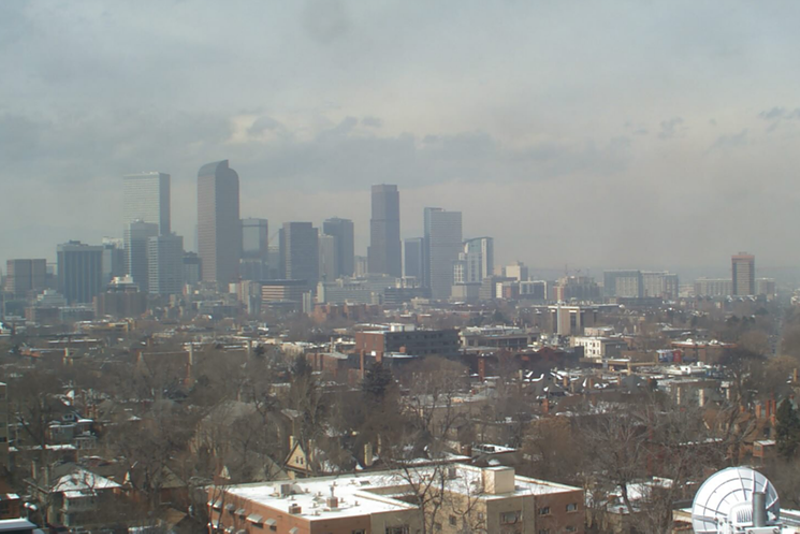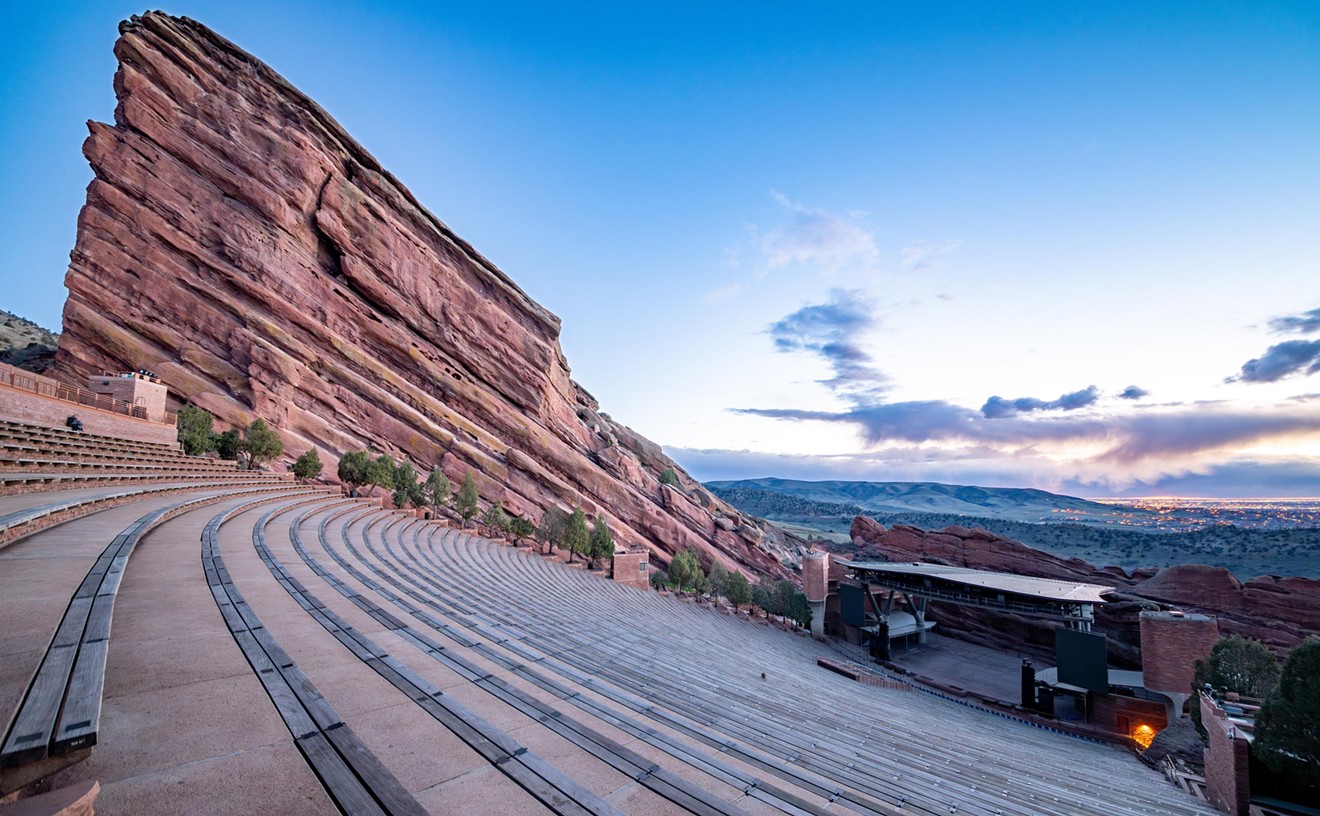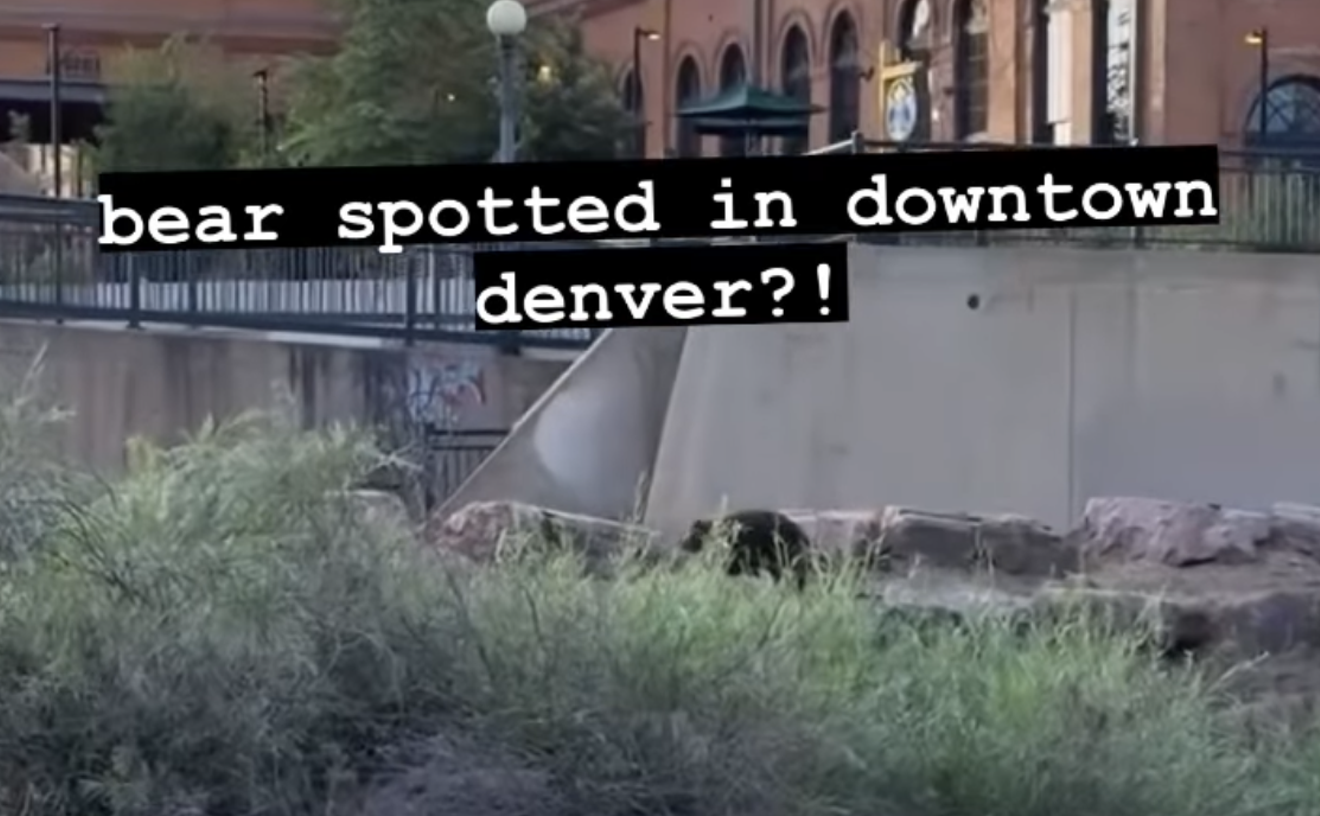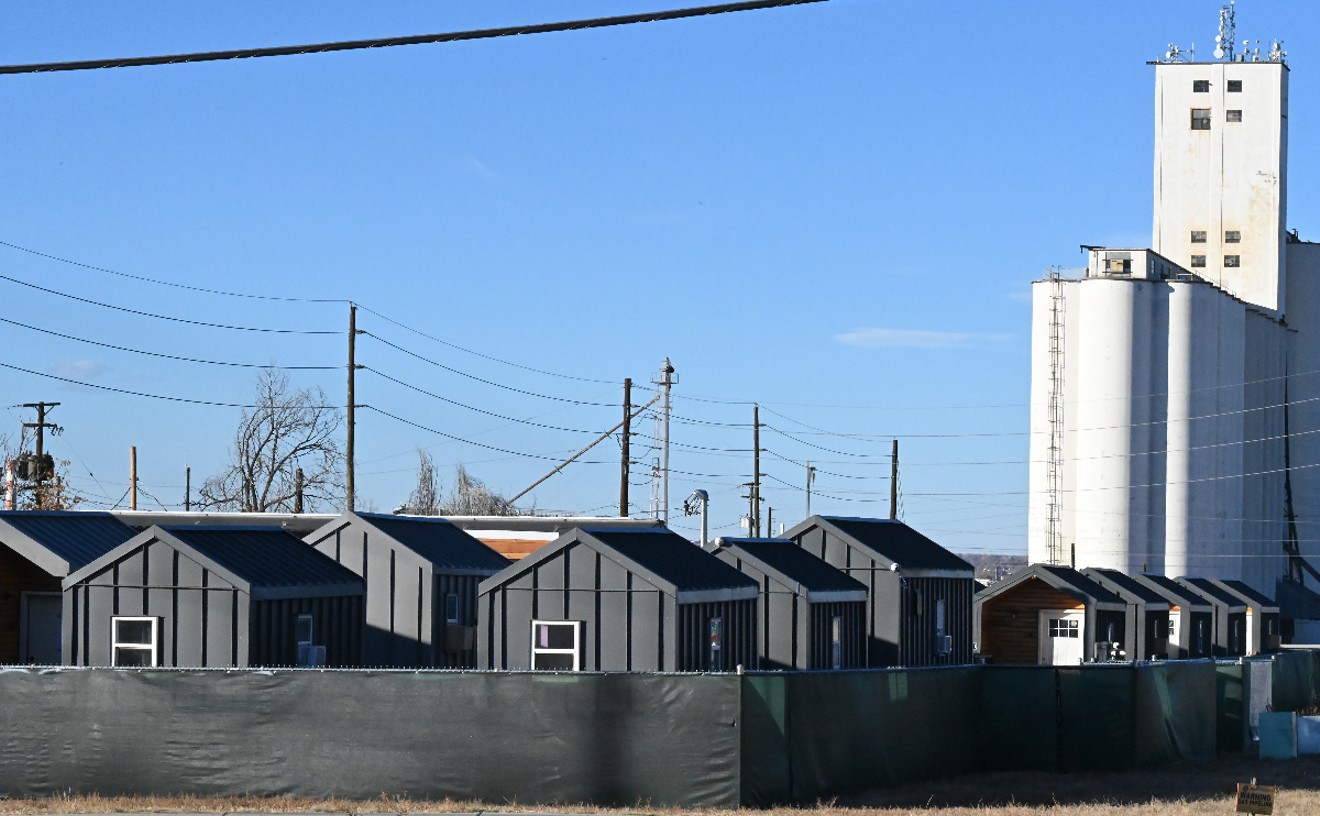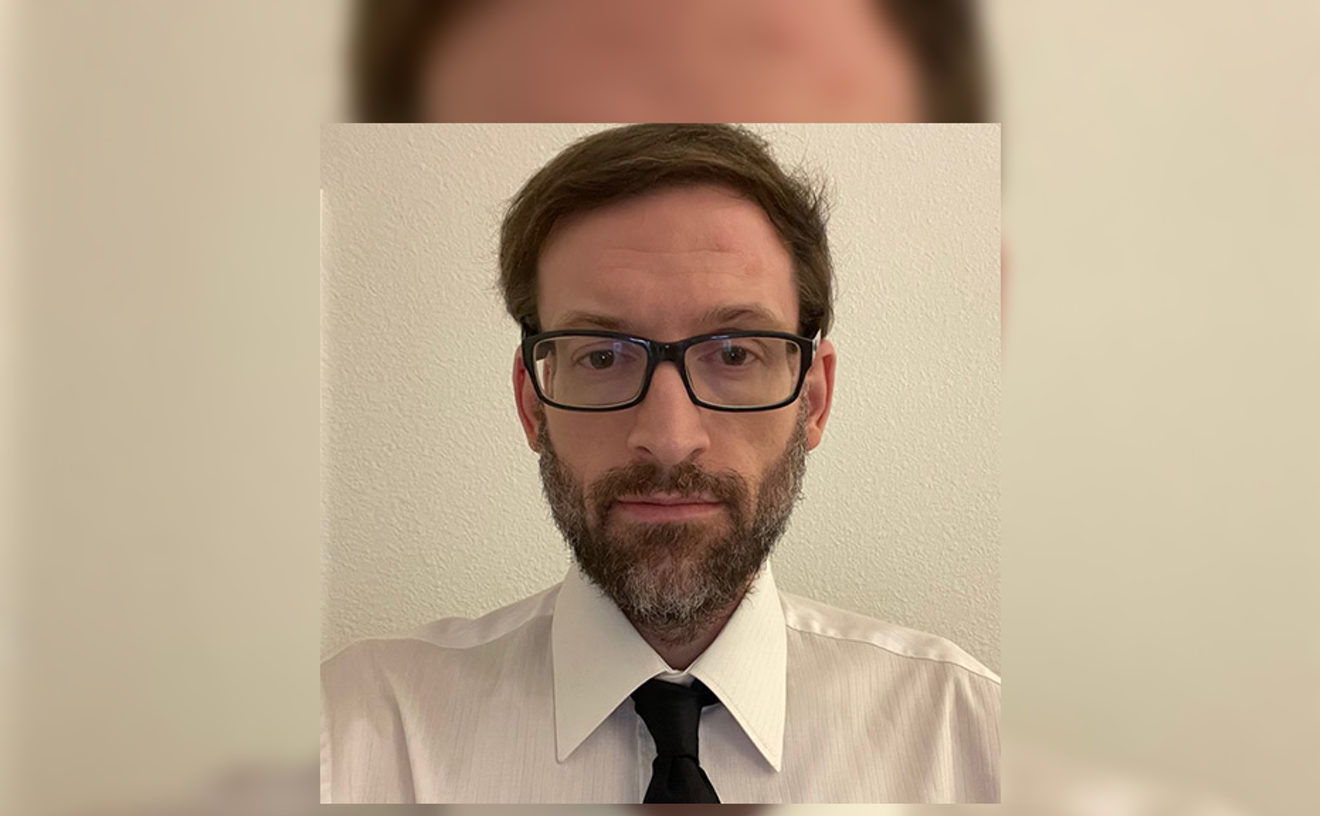Ozone is a secondary pollutant that forms when other pollutants — primarily volatile organic compounds and nitrogen oxide — mix with heat and sun, which is why these alerts are prevalent during the summer months. Since nitrogen oxide comes out of car tailpipes, cutting back on automobile travel can cut back on ozone.
Though ozone often correlates with high smog days — when the haze in the air can block views of the mountains — ozone is actually colorless. Denver exists in a bowl between the Rockies to the west and the plains to the east, and the topography can create an inversion effect that traps everything in the bowl, including pollutants that not only create a brown cloud, but react with the sun to make ozone. Such an inversion typically precedes the worst days for air quality, according to Stefanie Rucker, head of the Air Pollution Control Division's Office of Innovations in Planning.
And the situation is only getting worse, says Alexandra Schluntz, associate attorney with the Earthjustice Rocky Mountain Office. “With climate change, we're getting less of the kind of afternoon-cloud-cover rainy days that can reduce ozone," she notes.
Ozone can aggravate lung conditions such as asthma and chronic obstructive pulmonary diseases; it’s particularly dangerous for young children and adults over 65. Denver ranks seventh on the American Lung Association's list of most polluted cities for ozone in 2022. In 2021, it ranked eighth.
Ozone is one of the pollutants for which the Environmental Protection Agency has issued a National Ambient Air Quality Standard; in April, the EPA decided to downgrade the northern Front Range's status from a serious violator of federal ozone standards to a severe violator. The northern Front Range includes nine Colorado counties and stretches from Fort Collins to Castle Rock; the area was downgraded because it failed to bring ozone below the EPA’s 75 parts per billion standard, which the agency established in 2008.
The EPA evaluates areas on a three-year cycle and changes their classifications based on the progress, or lack thereof, made during those years. The EPA set a stricter standard in 2015 of 70 parts per billion — which the Denver non-attainment area has clearly not met.
The EPA is "rightfully lowering the standard, and they have lowered it a couple of times,” Rucker says. “That's a good thing, because obviously, if they're doing these health-impact studies and it shows that there are health impacts at lower levels, then we need to be meeting those lower levels.”
Now that the area has been reclassified from serious to severe, the APCD has more ability to regulate emissions because more sources are considered major sources, which are subject to stricter Title V permits as specified by the Clean Air Act. The major source threshold had been 50 tons of ozone per year; now it will be 25 tons per year.
“There are opportunities there to increase the record-keeping, increase the monitoring," Rucker says. "They're being more strict with how they document that they're being in compliance.”
The downgrade also impacts the State Implementation Plan, which outlines air modeling and enforceable control measures Colorado will take to meet ozone standards. Colorado has a SIP for both the 2008 and the 2015 NAAQS ozone standards; it has to rework the State Implementation Plan every time an area gets downgraded.
Part of that reworking will involve a proposal by the Regional Air Quality Council, the air-quality planning agency for the Front Range established in 1989; it's supposed to facilitate discussions of transportation-related air-quality issues and help coordinate the process among the CDPHE and the Colorado Department of Transportation, local governments and the public.
When it's time for a new SIP, the council works with stakeholders to gain information, then submits a proposal to the APCD, which works it into a rule that the Air Quality Control Commission, which oversees the state's air program, can then adopt. Though the APCD is not bound by the RAQC's recommendation, its proposal tends to hold weight, according to Colorado Communities for Climate Action, a coalition of local governments advocating for stronger climate policy statewide.
“I think the Regional Air Quality Council and also the Air Quality Control Commission both need to urgently address this issue, because it’s really bad and it’s not getting better,” says Matt Jones, a Boulder County Commissioner who's a member of the group.
The RAQC is set to finalize its recommendations at its August meeting. The APCD will likely ask the Air Quality Control Commission to consider its new SIP proposal for adoption at the AQCC's September meeting; the AQCC will then schedule a formal hearing for later in the year.
In addition to transportation, oil and gas activities are a major cause of ozone. Colorado Communities for Climate Action have called for the RAQC to consider strong strategies for curtailing high-emitting oil and gas activities during ozone season, adopting stronger non-road engine standards, implementing flaring controls or a flare minimization plan at the Suncor refinery in Commerce City, enforcing indirect source rules, and increasing transit ridership and bike and pedestrian infrastructure and access.
Katherine Goff, a member of the Northglenn City Council who's vice chair of Colorado Communities for Climate Action, says that such controls at the state level are important, particularly for places like Northglenn that are along major Interstates. “If a local community tries to make some kind of regulation, it's not going to be as effective unless a larger community area is going to also be doing the same sort of thing,” Goff says.
This week, the Center for Biological Diversity sued the EPA in the U.S. Court of Appeals over its decision to approve Colorado's SIP for the 2015 standard, despite a loophole that allows unlimited pollution from fracking. That loophole exists because the state considers emissions from fracking temporary, since drill rigs are not permanent construction.
"Our smog problem has gone on for a long time, and it really has grave consequences; people can die," says Robert Ukeiley, senior attorney in the Center for Biological Diversity's environmental health program.
"The Clean Air Act requires clean air all the time," he adds. "We can't hold our breath for ten days, or however long a temporary emission lasts, so it doesn't make sense — or in legalese, it was arbitrary and capricious for the EPA to approve. There's just a fundamental rule that when the government does things it has to make sense."
Besides closing fracking loopholes, Schluntz suggests that the state could do more to eliminate ozone by promoting clean trucking initiatives and indirect source rules, such as considering the emissions of trucks going to and from a warehouse. “This year the state decided that there wasn't enough time to look really hard at this kind of indirect source rule to do in this year’s SIP, which is baffling to me, because we've seen this downgrade coming for years,” she says. “I don't understand how we've run out of time.”But recently, the state has amped up its efforts. In the 2022 legislative session, funding was allocated to the APCD to hire more people and modernize the division in accordance with expanded responsibilities related to ozone. As a result, Rucker is optimistic.
“I've been here for fourteen years, and this is what we keep working on, and we're really dedicated to that,” she says. ”Now we're adding in all of these other things around climate change, and that's exciting from a personal standpoint. ... The more authority that we're being granted is daunting, but it's also amazing, because it means we can do more.”

